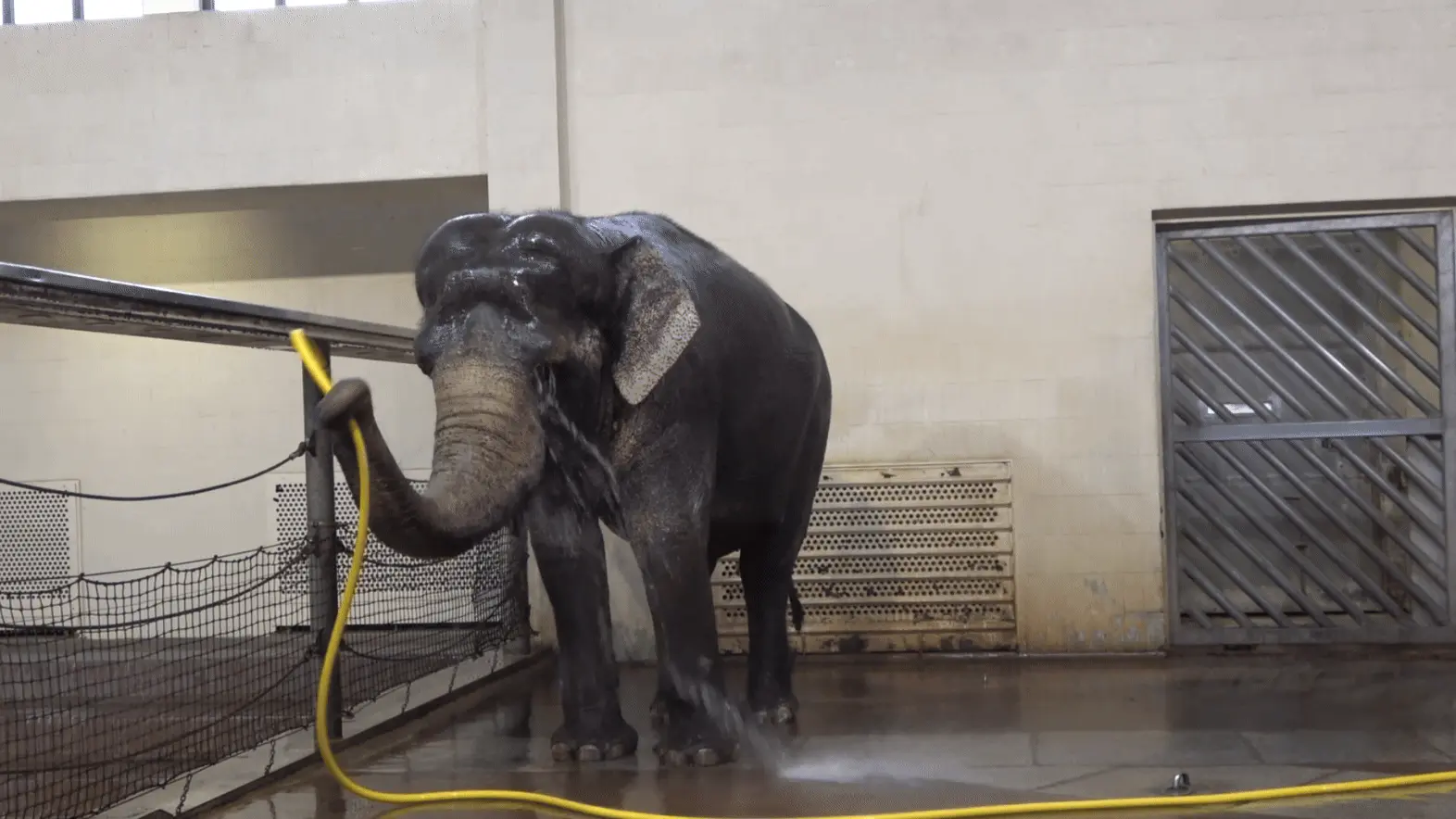New Research
Scientists Finally Identified This Glowing, Transparent 'Mystery Mollusk' After Nearly 25 Years of Puzzling
The newly described species of sea slug dwells in darkness in the ocean’s midnight zone, using a hood to capture prey with a Venus flytrap-like technique
Fat Cells Retain a 'Memory' of Obesity, Making It Hard to Lose Weight and Keep It Off, Study Suggests
Obesity leads to DNA alterations that affect gene activity and linger after weight loss, a finding that researchers say could help reduce stigma around the disease
New 3D Bioprinter Could Build Replicas of Human Organs, Offering a Boost for Drug Discovery
The invention uses light, sound and bubbles to quickly create copies of soft tissue that might one day support testing individualized therapies for cancer and other diseases
The Far Side of the Moon Was Volcanically Active, New Studies Confirm
Scientists analyzed the first and only rock samples from the region, which were brought back to Earth as part of a recent Chinese mission
ChatGPT or Shakespeare? Readers Couldn't Tell the Difference—and Even Preferred A.I.-Generated Verse
A new study suggests people might like chatbot-produced poems for their simple and straightforward images, emotions and themes
These Mysterious 12,000-Year-Old Pebbles May Be Early Evidence of Wheel-Like Tools, Archaeologists Say
Researchers in Israel suggest the roughly donut-shaped artifacts could be spindle whorls, representing one of the oldest examples of rotational technology
These Fossil Teeth From an 11-Year-Old Reveal Clues to Why Humans Developed an Unusually Long Childhood
Roughly 1.77-million-year-old teeth show that slow development in hominids may have had an earlier start than previously thought, according to a new study
Historians Thought This Was a Medieval Site Linked to King Arthur. It Turned Out to Be a Mysterious Monument Built 4,000 Years Earlier
Researchers have excavated King Arthur's Hall, a rectangular enclosure in southwest England, and determined that it dates to at least 3000 B.C.E.
See Staggering Photos of the World's Largest Coral, Newly Discovered by Scientists in the Pacific Ocean
The enormous organism is bigger than a blue whale and made up of millions of genetically identical, tiny animals called polyps
How a Team of Gophers Restored Mount St. Helens After Its Catastrophic Eruption With Less Than a Day of Digging
After the volcanic eruption of 1980, scientists released the burrowing rodents for only a brief time, but their activities left a remarkably enduring impact, according to a new study
Scientists Are Using CT Scanners to Reveal the Secrets of More Than Two Dozen Ancient Egyptian Mummies
For the first time, researchers were able to see inside the mummies in the Chicago Field Museum's collections. Their findings paint a more comprehensive picture of ancient Egyptian life
Voyager 2 Measured a Rare Anomaly When It Flew Past Uranus, Skewing Our Knowledge of the Planet for 40 Years, Study Suggests
The roughly six-hour flyby in 1986 revealed Uranus' protective magnetic field was strangely empty. Now, researchers say that the data could have been affected by a solar wind event
These Elephants Can Use Hoses to Shower—and Even 'Sabotage' Each Other, Study Suggests
Mary, a 54-year-old Asian elephant at the Berlin Zoo, is the “queen of showering,” but her companion Anchali seems to have figured out how to exploit that habit to play pranks
DNA Evidence Is Rewriting the Stories of Victims Who Perished in Pompeii Nearly 2,000 Years Ago
A new study has shattered historians' long-held assumptions about some of the people who died in Mount Vesuvius' eruption in 79 C.E.
Chimpanzees Could Never Randomly Type the Complete Works of Shakespeare, Study Finds
While testing the "infinite monkey theorem," mathematicians found that the odds of a chimpanzee typing even a short phrase like "I chimp, therefore I am" before the death of the universe are 1 in 10 million billion billion
Archaeologists Are Bewildered by a Skeleton Made From the Bones of at Least Eight People Who Died Thousands of Years Apart
Found in a cremation cemetery in Belgium, the skeleton includes bones dating to the Neolithic period and a Roman-era skull, according to a new study
Rare 'Terror Bird' Fossil Found in Colombia Reveals the Enormous Size of a Prehistoric Predator
The bone, described two decades after its discovery, suggests the species might have grown up to 20 percent bigger than other terror birds
Watch Vampire Bats Run on a Tiny Treadmill to Shed Light on Their Blood-Fueled Metabolism
In a rare technique among mammals, the bats burn proteins from blood, rather than carbs or fat, to power their pursuits of prey, according to a new study
The World's Earliest Writing System May Have Been Influenced by Older Symbols Found on Stone 'Cylinder Seals'
Thousands of years ago, our ancestors used symbols to track the sale of textile and agricultural products. New research suggests that these markings informed the development of writing
How Sugar Rationing During World War II Fended Off Diabetes and High Blood Pressure Later in Life
Babies who were conceived and born during the period of rationing in the United Kingdom were less likely to develop certain diseases as adults, a new study finds
Page 1 of 254
:focal(960x485:961x486)/https://tf-cmsv2-smithsonianmag-media.s3.amazonaws.com/filer_public/b6/06/b60675be-ad2f-4b5b-b0df-604af3c3a2ad/mystery_mollusc_d0598_02_1920_1.jpg)
:focal(2422x2053:2423x2054)/https://tf-cmsv2-smithsonianmag-media.s3.amazonaws.com/filer_public/b0/84/b0842710-0364-4fea-af8f-d9b2ebb10697/gettyimages-549602961.jpg)
:focal(400x269:401x270)/https://tf-cmsv2-smithsonianmag-media.s3.amazonaws.com/filer_public/d9/ab/d9ab6f7f-d9b7-46d1-aba3-622d5dabafec/large.jpg)
:focal(1943x1295:1944x1296)/https://tf-cmsv2-smithsonianmag-media.s3.amazonaws.com/filer_public/ee/97/ee979d50-a053-49d6-809c-b73e9c6bdff8/full_moon_in_september_10_2022.jpg)
:focal(1400x947:1401x948)/https://tf-cmsv2-smithsonianmag-media.s3.amazonaws.com/filer_public/82/e2/82e2aaf8-e366-4d85-a549-a5b58b46bd3f/gettyimages-85308935.jpg)
:focal(600x343:601x344)/https://tf-cmsv2-smithsonianmag-media.s3.amazonaws.com/filer_public/93/3c/933cdc4a-eef8-4b13-b8bc-4a63744f7433/mgzpnsh5h3shymzgzmtpon-1200-80jpg.webp)
:focal(350x197:351x198)/https://tf-cmsv2-smithsonianmag-media.s3.amazonaws.com/filer_public/31/cc/31cc5416-aa8e-4407-9dc6-e9faff2a2d4b/low-res_dmanisi_3dskull2.jpg)
:focal(584x439:585x440)/https://tf-cmsv2-smithsonianmag-media.s3.amazonaws.com/filer_public/4c/7e/4c7e1851-2631-4f1a-a857-5e7d2a14fa9d/16.jpeg)
:focal(3000x2000:3001x2001)/https://tf-cmsv2-smithsonianmag-media.s3.amazonaws.com/filer_public/57/7a/577afb3b-9df3-415b-8f04-220c80031cd2/06_-_ngsps2024sol_msf_2532nat_geographic.jpg)
:focal(1024x683:1025x684)/https://tf-cmsv2-smithsonianmag-media.s3.amazonaws.com/filer_public/97/18/9718b9b9-d14c-4ea3-b453-6f5cfd036eca/3452847211_737c2b1074_k.jpg)
:focal(1024x683:1025x684)/https://tf-cmsv2-smithsonianmag-media.s3.amazonaws.com/filer_public/4b/96/4b96171a-3bf4-4049-a669-ba3e88a81872/dsc04996-2.jpg)
:focal(860x860:861x861)/https://tf-cmsv2-smithsonianmag-media.s3.amazonaws.com/filer_public/fc/b1/fcb131a6-5b51-4f73-a7f0-ee465ab796bd/uranus.jpg)

:focal(848x638:849x639)/https://tf-cmsv2-smithsonianmag-media.s3.amazonaws.com/filer_public/15/b6/15b62b35-b360-4b81-8019-ef6aed2fece2/original_1.jpeg)
:focal(3127x2025:3128x2026)/https://tf-cmsv2-smithsonianmag-media.s3.amazonaws.com/filer_public/ec/69/ec69fda9-3e06-4dad-afcb-7d2518e03348/gettyimages-583865170.jpg)
:focal(792x543:793x544)/https://tf-cmsv2-smithsonianmag-media.s3.amazonaws.com/filer_public/a4/26/a426c7fb-e4cc-499d-81a3-de0eb2923e37/urn_cambridgeorg_id_binary-alt_20241019094932-63883-optimisedimage-png-s0003598x24001583_fig2.jpeg)
:focal(350x317:351x318)/https://tf-cmsv2-smithsonianmag-media.s3.amazonaws.com/filer_public/19/fe/19fe1953-9f61-426d-bc6a-a193a4193b77/low-res_alex_oct_31_terror_bird.jpg)
:focal(503x326:504x327)/https://tf-cmsv2-smithsonianmag-media.s3.amazonaws.com/filer_public/1c/24/1c249e86-ae07-4650-88a7-b4f9bccaefda/screen_shot_2024-11-06_at_121755.png)
:focal(557x414:558x415)/https://tf-cmsv2-smithsonianmag-media.s3.amazonaws.com/filer_public/bd/83/bd83347e-a85c-4411-9237-bb88470fb734/example_of_a_cylinder_seal_left_and_its_design_imprinted_onto_clay_right_credit__franck_raux__2001_grandpalaisrmn_musee_du_louvre.jpg)
:focal(640x451:641x452)/https://tf-cmsv2-smithsonianmag-media.s3.amazonaws.com/filer_public/da/98/da98cc39-8d84-4558-8078-a5e79242d27a/candies-171342_1280.jpg)